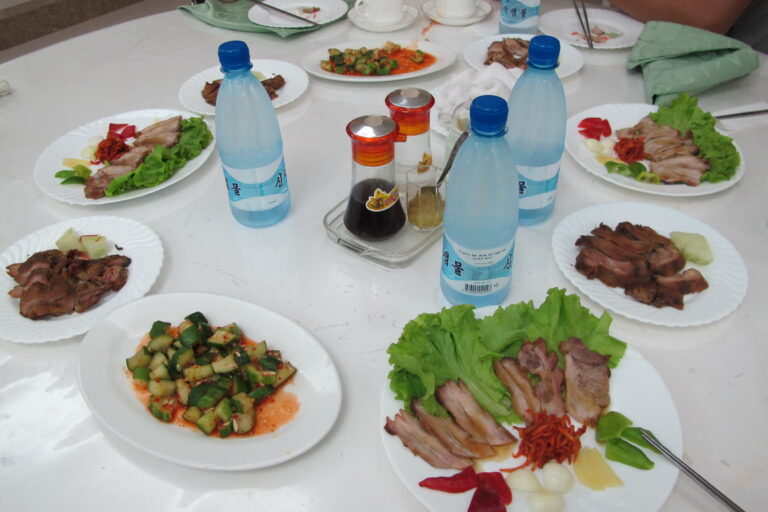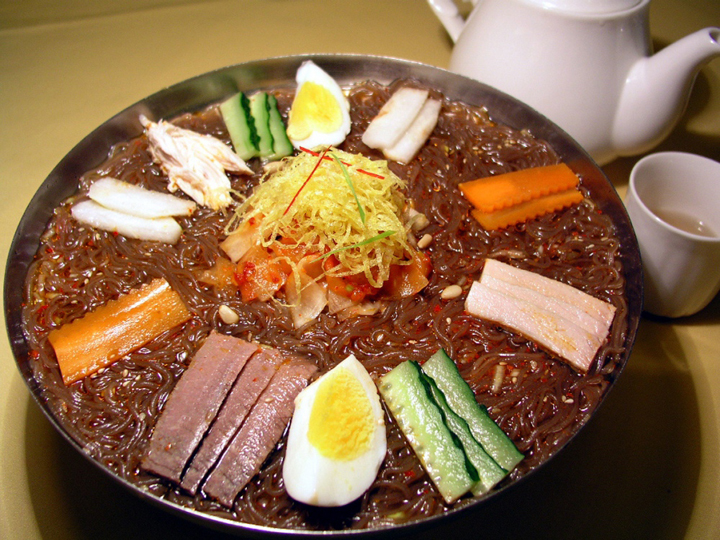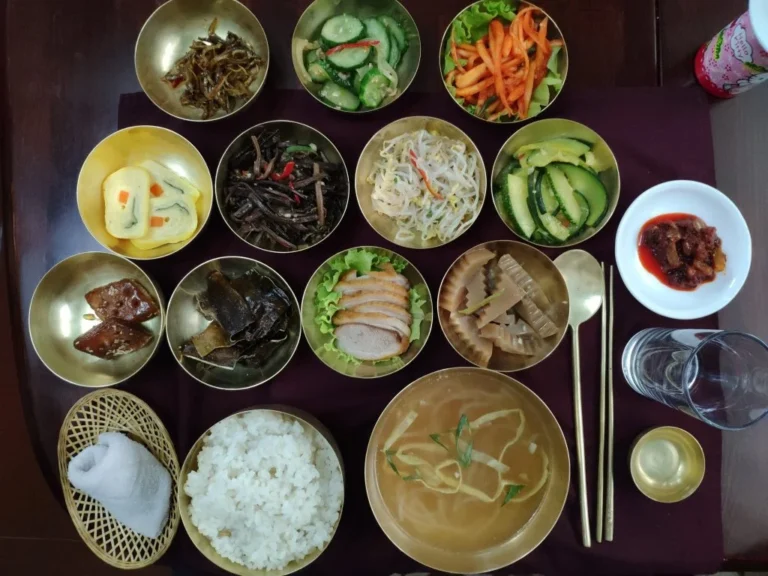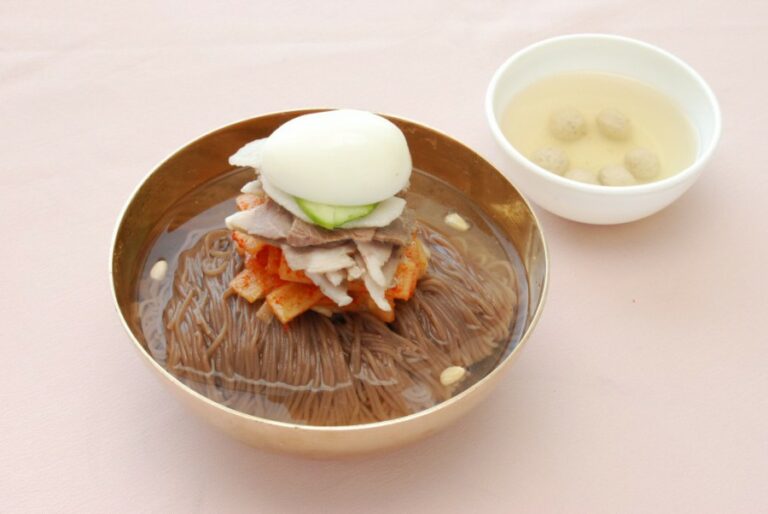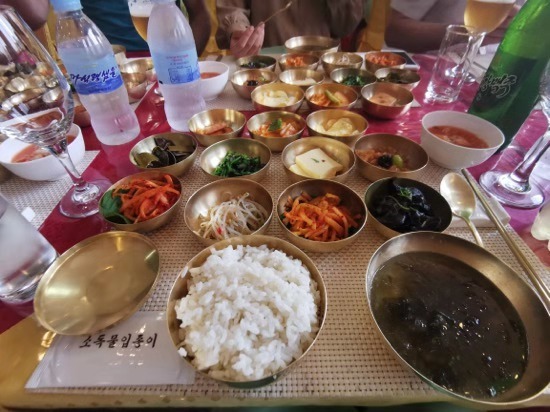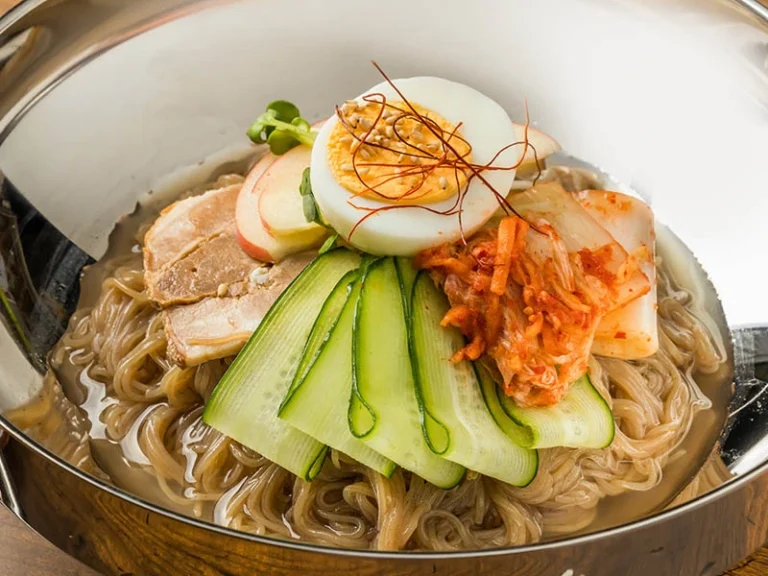Introduction: North Korean cuisine overview
North Korean cuisine is a reflection of the country’s geography, climate and history. It is a blend of traditional Korean dishes and indigenous ones that are unique to North Korea. The cuisine is known for its simplicity, use of fermented ingredients, and emphasis on local and seasonal produce. It is also heavily influenced by neighboring countries such as China and Russia.
Traditional ingredients in North Korean cuisine
The traditional ingredients used in North Korean cuisine include rice, vegetables, seafood, meat, and various seasonings. Rice is the staple food and is often served with side dishes such as kimchi, a spicy pickled vegetable dish. Vegetables such as radish, cabbage, and bean sprouts are also commonly used in dishes. Seafood is abundant in North Korea due to its long coastline and is often grilled or pickled. Meat, particularly pork, is another popular ingredient used in traditional dishes such as bulgogi, a marinated grilled meat dish. Soy sauce, garlic, ginger, and sesame oil are some of the seasonings used to add flavor to dishes.
Influences from neighboring countries on North Korean cuisine
North Korean cuisine has also been influenced by neighboring countries such as China and Russia. Chinese dishes such as jajangmyeon, a noodle dish with black bean sauce, and tangsuyuk, a sweet and sour pork dish, are popular in North Korea. Russian influences can be seen in dishes such as kulebyaka, a fish pie, and borscht, a soup made with beetroot.
Unique ingredients used in North Korean cuisine
North Korean cuisine has some unique ingredients that are not commonly found in other cuisines. One of these is naengi, a type of wild celery that grows in the mountains. It has a unique flavor and is often used in soups and stews. Another unique ingredient is pine nut oil, which is extracted from pine nuts and used as a seasoning in dishes. Acorn jelly, made from acorn starch, is another unique ingredient that is commonly used in North Korean cuisine.
Health benefits of North Korean cuisine ingredients
Many of the ingredients used in North Korean cuisine have health benefits. Kimchi, for example, is a probiotic food that can aid digestion and boost the immune system. Garlic, ginger, and sesame oil have anti-inflammatory properties and can lower cholesterol levels. Seafood is high in omega-3 fatty acids, which are beneficial for heart health. Naengi is a good source of vitamin C and other antioxidants.
Conclusion: North Korean cuisine and cultural identity
North Korean cuisine is an important part of the country’s cultural identity. It reflects the country’s history, geography, and influences from neighboring countries. The use of unique ingredients and emphasis on local and seasonal produce make it a distinct cuisine that is worth exploring. Additionally, the health benefits of many of the ingredients used in North Korean cuisine make it a nutritious choice for those looking to improve their diet.

